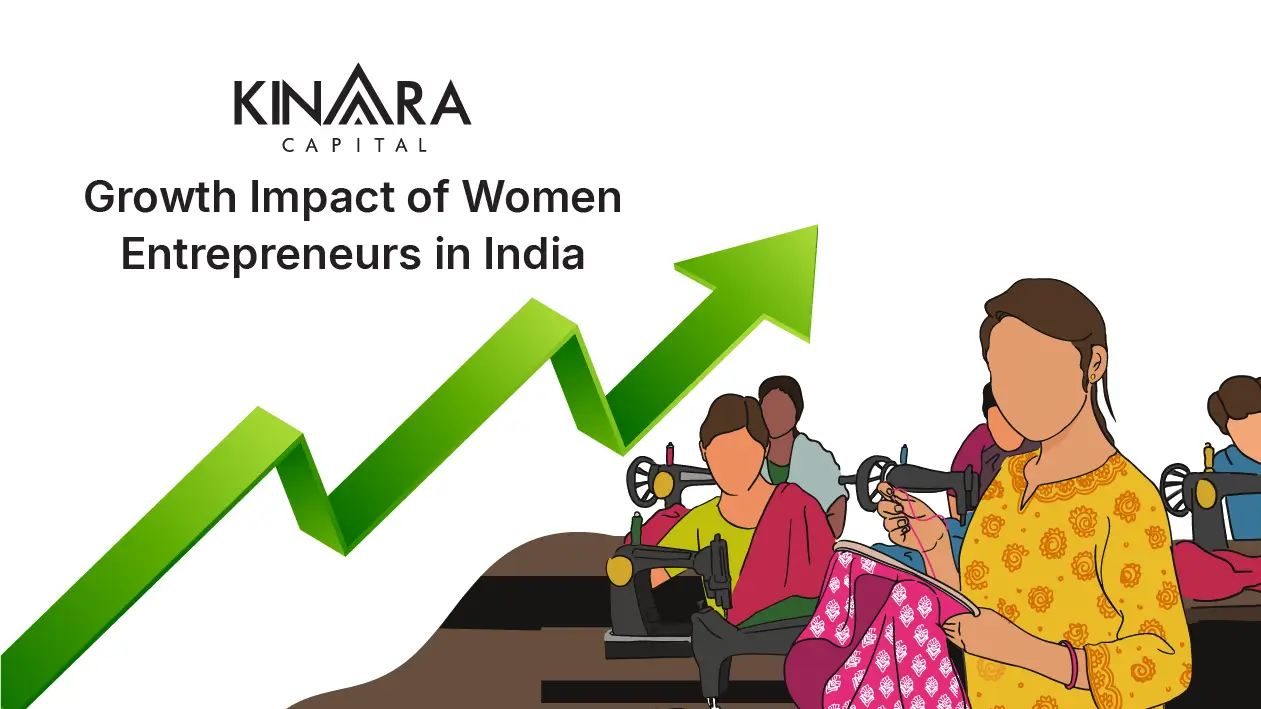
Women entrepreneurs have been making a significant impact across several industries in the Indian economy. Women-led businesses have always had the odds stacked against them in the form of prejudices and biases in the entrepreneurial and MSME segment. They find it difficult to start their businesses, and scaling them is even more challenging. In India, 63 million MSMEs contribute 30% of GDP and provide jobs to 110 million people. IFC’s FY24 investments are enhancing access to credit, enabling clients to extend 30 million MSME and micro loans. The pandemic has made it even more challenging for such businesses, as the credit gap is hindering ability to scale. Currently, there are 8 million micro-enterprises led by women in the country, and they face a credit deficit of over USD 158 billion. Disadvantages in terms of acquiring funding and higher interest are widening the gap further. Additionally, women entrepreneurs encounter other challenges related to unconscious gender bias and general social barriers. According to studies, it is estimated that 90% of women entrepreneurs do not have access to finance from formal financial institutions, yet women entrepreneurs have performed better than their male counterparts.
As the government made an attempt to decontrol the economy along with the foreign market entering the Indian market, liberalisation of the Indian economy started in 1991. The main objective of liberalisation was to enhance budgetary receipts and to minimise any loss-making units. With the Industrial Policy Resolution (IPR), special policies for entrepreneurship were implemented, which gave a boost to women entrepreneurs and enabled them to set up their enterprises to contribute to the newly liberated Indian economy. However, by the early 2000s the lack of capital and demand resulted in around 7% of women-led MSMEs becoming sick industries and further resulted in permanent closure of these businesses.
Globalisation did promote higher living standards and improved productivity, however it took women entrepreneurs over two decades to find a firm footing and start establishing their small businesses. Globalisation opened doors for opportunity in the business arena with a better flow of foreign investment and technology, and small business owners were able to deliver better products, increasing customer satisfaction. With new businesses emerging at a fast pace, employment opportunities also increased, as did competition in the market.
In the Indian MSME sector, women-led businesses are about 20.37% and contribute around 23.3% of the labour force, according to a report from the Indian Brand Equity Foundation (IBEF). There are 13.5 to 15.7 million businesses owned by women that provide employment to 22-27 million people. They are considered as the backbone of the Indian economy. It is also estimated that the national economy could add up USD 770 billion which is 18% more to the global GDP by 2025 with increased participation of women in the labour force. With an increase in the number of startups and adoption of inclusive work culture, it is expected that women-led businesses will grow 90% in the next 5 years. According to recent government data released, The female labour force participation rate rose to 24% in Q2 FY24 from 23.2% in the previous quarter and 21.7% in Q2 FY23.
In a country where the benchmark set for women is limiting themselves to managing household responsibilities, things have developed to a great extent where there are currently 15.7 million women-led businesses. This shows that women can grow exponentially and could be a huge game-changer for the MSME sector.
Encouraging women-led business is essential for sustainable growth, yet they continue to face challenges which are so much more difficult than those faced by their male counterparts.
Women mainly face problems on two counts. Firstly, women do not usually have property in their names to use as collateral for obtaining funds from external sources. Secondly, they are given access to less credit and discouraged from persisting in their efforts to sustain and expand their businesses. Thus, women entrepreneurs are not supported and they fail due to financial shortage.
There are several schemes provided by the government and financial institutions but only 17% of women entrepreneurs are aware of them, which is a huge drawback of women entrepreneurs looking to acquire funds for their business.
As women entrepreneurs lack funds in general it is difficult for them to undertake activities like canvassing and advertising their products and services, which in turn leads them to fall behind the stiff competition in terms of marketing.
Unfortunately, in our society women are expected to give more attention to their families than their careers. Lack of support from family creates a huge impact and is a major setback that holds women back from being successful.
According to a report by BCG, women-led businesses can generate cumulative 10% more revenue in a period of 5-years and have 3x more inclusive work culture compared to their male counterparts. Women entrepreneurs are leaning towards digitalisation and adoption of tech to reduce this gender gap and gain access to finances through private lenders, NBFCs and banks. Digital technology will also enable them to reduce the dependency on male counterparts and create more awareness regarding women business development schemes and alternative collateral-free lending opportunities available in the market. Currently, women MSMEs contribute to around 18.73% of the total industrial output. With access to credit this will change and they contribute to a higher output and create more jobs in the Indian economy.
Being a financially independent woman makes one a role model for other women in society. This also impacts on the society to progress into a healthier, safer and a bias-free environment. Financial independence for women also reflects a bigger impact at the level of economic development, growth and progress of the country. One of the best ways to be financially independent is by saving and investing one’s earnings in order to be secure in the future without being dependent on others.
With the government’s initiative to empower women entrepreneurs, many schemes have been implemented to provide for their sustainable business development and growth. According to recent statistics, the number of women who have benefited from these schemes has significantly increased.
Data shows that under the Prime Minister’s Employment Generation Programme (PMEGP), the total number of women beneficiary count has increased up to 43% from FY21 to FY22, with a total count standing at 39,154 currently. Similarly, under Public Procurement Policy, which mandates a minimum procurement of at least 3% by the government department and public enterprises from women-led units, the total number of women beneficiaries has increased up to 105% from FY21 to FY22, with a total count of 10,287 at present. Under the Entrepreneurship Skill Development Programme (ESDP) there has also been an increase from 13,640 in FY21 to 24,734 in FY22.
As of March 2024, data from the Ministry of Micro, Small & Medium Enterprises indicates that 4,00,42,875 MSMEs are registered on the Udyam portal, including the Udyam Assist Platform. Among these, 97.7% are micro-enterprises, 1.5% are small enterprises, and 0.8% are medium-sized enterprises. Additionally, the Government e-Marketplace (GeM) portal handled 5.8 million orders valued at Rs. 3,87,006 crore (US$ 46.67 billion), involving 148,245 primary buyers and 215,743 secondary buyers. There are several other initiatives, some of which are listed below:
Business loans are a great solution for small business entrepreneurs to access the capital they need in short order. Unfortunately, in this regard too, MSME women entrepreneurs face a disproportionate amount of difficulty. According to studies, close to 20% of women entrepreneurs face rejection when seeking loans from banks and lending companies, more than double the number of men, which stands at 8%. This presents an additional hurdle for women, who already struggle to have the wherewithal to enter a male-dominated area like business. The way to cut through these issues would be to make business loans easily accessible to women entrepreneurs.
To change the narrative of MSME lending and to empower women entrepreneurs in the country, Kinara Capital, an RBI-registered NBFC in India has designed a special programme called HerVikas. Under the HerVikas programme, women business owners get an automated discount on their business loans without any additional documentation. This programme helps remove some of the systematic biases in the MSME lending sector especially for women entrepreneurs in India. By removing the gender-based bias in MSME lending, NBFCs such as Kinara Capital will propel the growth of women-led MSMEs in India, which is estimated to create around 150-170 million new jobs in the country by 2030.
Kinara Capital also offers a range of small business loans for women, providing them with the necessary capital to start and expand their businesses. These MSME loans for women are designed to be accessible and affordable, ensuring that more women entrepreneurs can contribute to economic growth and innovation in India. By facilitating easier access to business loans for women, Kinara Capital is playing a crucial role in supporting female entrepreneurship and driving sustainable development in the MSME sector.
Female entrepreneurs in developing countries face challenges such as limited access to finance, cultural barriers, inadequate support networks, and regulatory constraints.
Women entrepreneurs contribute to economic growth in India by creating jobs, fostering innovation, and driving community development, which collectively enhance the country’s GDP.
Increasing the number of women entrepreneurs can significantly boost India’s GDP by expanding the workforce, diversifying the economy, and increasing productivity.
Women entrepreneurs in India face challenges such as limited access to credit, lack of collateral, gender bias in lending practices, and insufficient financial literacy.
Financial independence empowers women in India by enhancing their decision-making capabilities, improving their social status, and enabling them to invest in education and health for their families.
